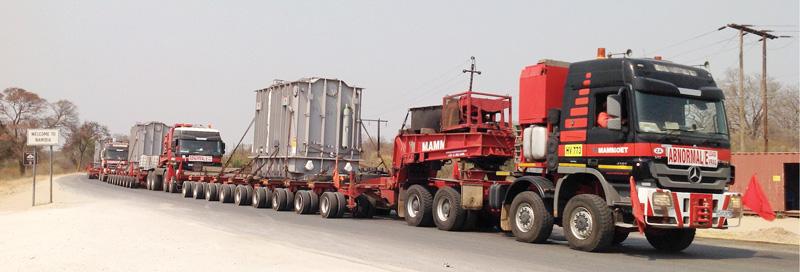
Walvis Bay Group the logistical corridor

The Walvis Bay Corridor Group’s strategic initiative for the current five-year plan has been to facilitate the growth of abnormal and project cargo through Walvis Bay.
According to the group they have been in contact with various shipping lines, abnormal load transporters and other service providers to create more awareness about this opportunity and have seen a significant increase in abnormal loads via the Walvis Bay route with goods destined to other SADC markets such as Zambia, Botswana, South Africa and the Democratic Republic of Congo.
Walvis Bay is connected with good shipping services providing and option for shippers from Europe and North America to supply bulk, containerized and breakbulk shipments such as abnormal loads to our neighbouring countries in the shortest possible time.
The Port of Walvis Bay has over the past year acquired a number of mobile cranes to support the multipurpose dimension of cargo handling while we have seen more abnormal truckers exploring Walvis Bay as a faster and safer entry route into the SADC region.
Last year, vehicles continued to dominate Namibian imports with more than N$2.7 billion spent on these in the first quarter of the year. Second on the list was the importation of boilers, machinery and other equipment, no doubt represented by the large number of abnormal loads Namibian roads have seen of late, to the value of N$2.4 billion.
International heavy-lift, specialized transport and plant installation company, Vanguard, is one of the companies that use the Walvis Bay route for the transportation of abnormal loads. The company is handling a contract where it has to translocate 15 and install nine 110t transformers for power generation from Walvis Bay, to the DRC.
The contract, which began in 2015, continues apace this year, with a further six transformers in the pipeline for installation. On commencement of the contract, Vanguard made use of its heavy-lift facility in Walvis Bay to discharge the vessel and off-load the transformers into temporary storage, ready to be re-loaded for transport.
Director at Vanguard, Craig Pace, said that having heavy-lift facilities makes for greater efficiency, especially in terms of timeous discharging of ships, lower mobilisation costs and quicker access to the quayside. Indeed, in order to extend its services to customers working in Namibia, the DRC, Zambia and other southern African countries, Vanguard has this year extended its facilities on a 1,000 m2 site at the Port of Walvis Bay.
“As mineral shipments through the port at Walvis Bay from DRC and Zambia increases, this port is likely to become an important node for southern Africa and hence the upgrade of our facilities,” said Pace.
Vanguard added that having heavy-lift port facilities at Walvis Bay removes the necessity for road permits or abnormal clearances between the quayside and the storage yard, which streamlines the process for customers.
“Cargo can now be received in a direct discharge area, for relocation to a dedicated heavy load storage and handling area; it can then be off-loaded for temporary storage and loaded onto the transport trailers as required,” said Pace.
Other abnormal loads transported via the Walvis Bay route last year include amongst others tanks, fire trucks, ploughing machines, harbour cranes, crushers, and excavator/graders. “We have managed to attract more abnormal road hauliers to transport these abnormal roads from Walvis Bay to neighbouring countries,” said CEO of the WBCG, Johny Smith.










































